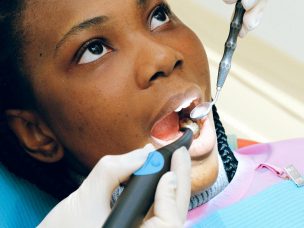Specialty
Macrophage Polarization and Crosstalk With Other Cells in Hidradenitis Suppurative
M1 polarization of macrophages and their dynamic crosstalk with other cells, such as fibroblasts and lymphocytes, may explain the pathogenesis of hidradenitis suppurativa, providing new therapeutic strategies. Hidradenitis suppurativa (HS) is a chronic inflammatory dermatological condition involving the perianal, axillary, inguinal, and gluteal areas of the body. The disease pathogenesis is based on the dysregulation...
Drug Survival of Biologics in Hidradenitis Suppurativa
A systematic review reports that the drug survival of biologics in hidradenitis suppurativa is comparatively shorter than that of biologics for other dermatological conditions. Drug survival is a measure of the tolerability and efficacy of different treatment regimens. It is described by the proportion of patients who remain on the given treatment regimen over a...
Hidradenitis Suppurativa as a Potential Risk Factor for Periodontitis
Patients with hidradenitis suppurativa were found to have a significantly increased risk of periodontitis compared to both healthy controls and psoriasis patients in a retrospective cohort study. Hidradenitis suppurativa (HS) is characterized by chronic inflammation of the skin, accompanied by systemic symptoms. HS is associated with comorbid conditions in other organ systems. Periodontitis is an...
Impact of Chronic Spontaneous or Inducible Urticaria on Occupational Activity
Chronic spontaneous and inducible urticaria significantly affect work productivity and quality of work, particularly when the conditions remain undiagnosed or poorly controlled, according to the findings of a new prospective study. Chronic urticaria is characterized by erythemato-papular rash associated with transient angioedema. Chronic spontaneous urticaria (CSU) or chronic inducible urticaria (CIndU) has a considerable impact...
Ziziphus Jujube Syrup in Treatment of Antihistamine-Resistant Chronic Urticaria
A randomized controlled trial reports that Ziziphus jujube syrup was an effective add-on treatment for a group of patients with chronic spontaneous urticaria resistant to standard second-generation H1 antihistamines. Chronic spontaneous urticaria (CSU) is an intermittent condition characterized by urticaria and/or angioedema lasting for a minimum of 6 weeks. The first-line management of CSU includes...
Bepotastine Besilate versus Levocetirizine in Chronic Spontaneous Urticaria Treatment
Bepotastine besilate was found to have comparatively greater efficacy than levocetirizine for reducing mean urticaria activity score and improving quality of life in chronic spontaneous urticaria patients in an interventional study. Chronic spontaneous urticaria (CSU) affects approximately 15–20% of the population at least once during their lifetime. Antihistamines comprise the cornerstone treatment approach for this...
Deregulation of USP7 Activity and Radioresistance of Breast Cancer Cells
The deregulation of ubiquitin-specific protease 7 activity increased DNA replication stress in an in vitro study, which was found to disrupt the DNA repair process during the S phase of the cell cycle. Aberrant expression of ubiquitin-specific protease 7 (USP7), a deubiquitinating enzyme, is involved in tumor progression. This is due to altered DNA damage...
Saraca asoca Methanol Bark Extract and Triple Negative Breast Cancer
Saraca asoca methanol bark extract had a selective anticancer effect on the estrogen-receptor subtype of triple-negative breast cancer in a cell culture study. The anticancer effects were attributed to phytoestrogens in the methanol bark extract, particularly quercetin. Saraca asoca has been found to have anticancer effects related to the presence of phytoestrogens in the methanol...
Role of 17β-Estradiol in Promoting Metastasis in Triple-Negative Breast Cancer
17ß-estradiol promotes metastasis in patients with triple-negative breast cancer. A cell culture and mouse model study demonstrated that this process may be mediated by the calpain/YAP/ß-catenin signaling axis. The absence of estrogen and progesterone receptors and human epidermal growth factor receptor-2 characterizes triple-negative breast cancer (TNBC) cells. The estrogen 17ß-estradiol, or E2, promotes the proliferation...
More Medical News














